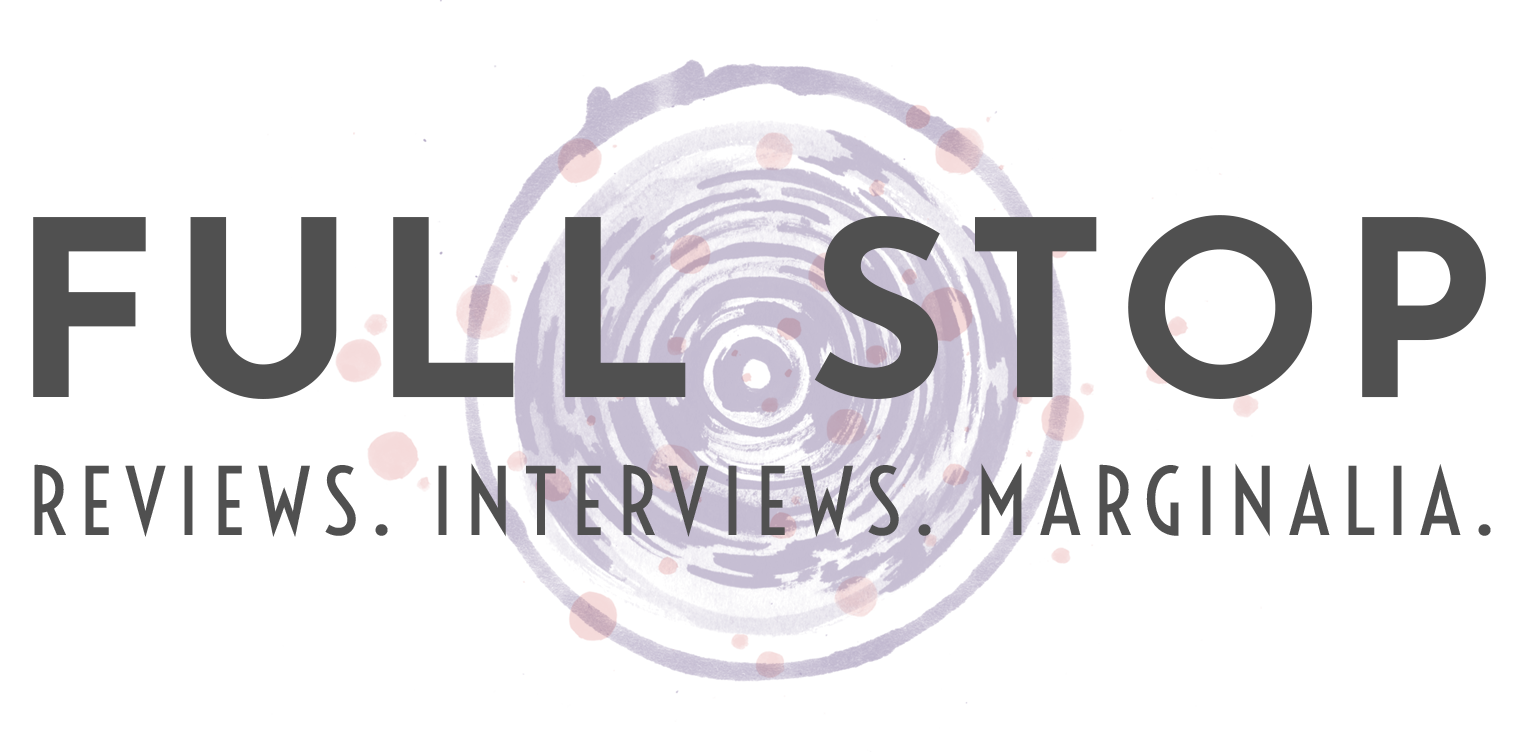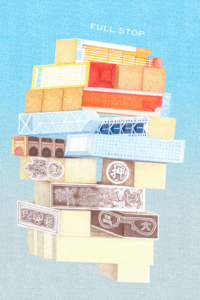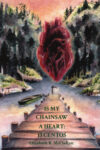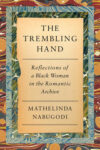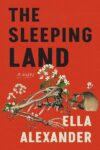
How much of our own life do we try to forget, force away? Wendy C. Ortiz lives in those moments. You can see it in her book Excavation, which details her high school teacher’s grooming of her, as it escalates into a full blown relationship; to Hollywood Notebook, a daily record of her twenty-something self navigating life in Los Angeles; to its companion piece Bruja, cataloging her subconscious through her dreams during the same time period.
I’ve kept her three books — Excavation, Bruja, and Hollywood Notebook — in a shelf on my nightstand across four different homes and two different coasts, my constant companions through life and world changes. To me, Wendy exemplifies the kind of artist so many of us aspire to be: always working and publishing on her own terms, turning hard lived moments into beautiful art.
These three books are so legendary and revelatory that they’ve been reissued, all at once, by Northwestern University Press. In honor of their release, we discussed the unusual life of these three books, revisiting emotional territory, community in writing, and, vulnerability. And now these three beautiful reissues live resolutely on my nightstand, next to their original counterparts.
Q: First, let’s talk about how the reissues came about! I love that they’re all together — though they each have their own identity, I feel like because they came out within three years, they’ve also always been a unit. Was this something you envisioned and sought out, or did Northwestern University Press approach you with the idea?
A: I hadn’t envisioned this scenario exactly. In 2022, both Bruja and Hollywood Notebook were out of print. Peers, who’ve been teaching Bruja in particular, were telling me that their students were having a hard time finding copies of the book. Megan Stielstra at Northwestern University Press started the conversation with me about possibly putting both books back in print. When I learned that there were folks at the press who had read and loved Excavation, I started leaning toward the idea that all three books get a reprint under one roof.
Q: I’m a devoted reader of your newsletter, Mommy’s El Camino, where you wrote about deciding to part ways with your agent. As someone who’s never had an agent, I so appreciated you sharing about that, and going with your instincts about what was or wasn’t feeling right. So, did you work out these reissues directly with NUP? And what was it like to go it alone with this kind of release?
A: Thank you for reading my newsletter! Yes, I worked out my three contracts with NUP on my own, with the help of my partner who is accustomed to reading and reviewing contracts in her job. I like to say now that I’ve sold three books, twice, myself! It’s funny and a bit bittersweet, because I have had three agents, two of whom tried to sell Excavation to a traditional publisher (one as a reprint). Going it alone with NUP was smooth and relatively easy. The folks at NUP have been very supportive.
Q: Excavation is an extremely generous memoir, about the relationship you were in as a preteen/teenager with a person of power in your life — a school teacher. As your own child has reached your age at the beginning of that, I’m curious — how it was for you to spend a lot of time back in that time period of your life, working on the reissue? I’m especially struck by the photo of you on the new cover; your kid now looks like a carbon copy of you in that photo.
A: It’s wild. In the past two years I’ve had to reread all three books for light revisions and then proofing, so the days I spent with Excavation again felt heavy, as they always do when I revisit the material. I look at my kid often and think about what I was doing at her age, and I’m aghast. My friends from that time have expressed similar sentiments, like, Can you believe we were roaming the streets, ingesting random drugs, and having unprotected sex?? Meanwhile, I’m parenting this kid who is — by design and by temperament — pretty sheltered, with an entirely different experience than I had. We could not be more different (I say now, though she’s on the cusp of fifteen…)
I had provided the photo that ended up on the cover as a visual on a Pinterest mood board at the request of the Press. I’d included very few mood photos for Excavation — it’s a tough one for me to create a “mood” around — so all I had was that photo and a photo of some Catholic schoolgirls smoking cigarettes. I was surprised when I was asked if I had the original photo. I get it, though — the stance, the face I’m making, the clothing — it all combines into the biggest mood of a teen in 1988 and makes sense as a cover for that book.
Q: You work as a therapist in private practice. How do you manage boundaries with readers about this subject matter? I’m imagining you’ve gotten your fair share of trauma dump emails, and I’m curious how your profession plays into that.
A: My boundaries as a therapist are firm, and that ends up informing how I respond (or don’t) to readers who write to me after they’ve read the book. There are times when I feel called to reply and times when I don’t. I usually thank the reader for reaching out, for reading, and I acknowledge the harm they suffered when they’ve described it. I wish them well. And that’s that. I tend to think my boundaries are pretty clear when readers email me, because I don’t get follow-up emails. The acknowledgment is usually enough.
Q: I’m so interested in your perspective on both Hollywood Notebook and Bruja now, upon reflection. Excavation was written about your past, but Hollywood Notebook and Bruja were written in the moment, and have a very present feeling to them. What was it like revisiting those snapshots of specific times in your life now, in retrospect?
A: Revisiting these books is wild. Hollywood Notebook reminds me that I went through a very weird, intense period when I moved back to Los Angeles — I can see the me going through her first Saturn return just struggling so hard, and drinking to cope. Rereading Bruja I laugh a lot more; the nightmarish aspects have worn off. I no longer dream of tsunamis or earthquakes or alligators, so I find it all fascinating. Some of the dreams feel like a movie I watched long ago, some are far less distinct — I’m just glad that I recorded them. Both books remind me that people in their late twenties/early thirties are still undergoing tremendous development!
Q: Bruja is a dreamoir, a memoir of your dreams. I think telling your dreams to people is so vulnerable, and you published a whole book of them! My best friend and I have an agreement where I only tell her the dreams I have that are about her, because otherwise she’s not interested (she’s a Leo). I’d especially love to hear about the gathering and editing process of this book. You manage to weave in characters and a narrative, but it’s still so beautifully abstract and nonlinear. Was it a beast to wrangle? Or did the lack of rules of entering a dream world give you more freedom?
A: It is so vulnerable! I find Bruja to be more vulnerable than Excavation in some ways! The agreement you have with your friend sounds great because it leaves the door open to some dreams, not all.
The book definitely took some shaping. I wanted to honor the chronology of the dreams because they’re the flip side of the life I was living during Hollywood Notebook — the flip side being unconscious, literally asleep. There were a few dreams I felt I could leave out, though, because in the end I did want every dream to read like its own discrete little story and some of the dreams were just not as interesting to me as the ones I included. Including the same pseudonyms I’ve used across all three books was like keeping some semblance of a narrative frame, as much as one can when the subject is dreams. So when I dream about “Nicholas,” a reader of all three books will recognize him as the narrator’s first boyfriend who was close to me/her in age. A reader of Hollywood Notebook will recognize “AQ” and even “Sh.” if they are paying close attention. (And if they are, this reappearance of “characters” is precisely what makes Bruja feel like the most vulnerable of the three books.)
Q: You have a daily practice of handwriting pages in a journal. I love when you share photos of the start and end dates of each journal! What is your morning practice like? What gets included in these pages? I really love the mental image of you writing at the dining table with your kid there eating breakfast — it’s like reading in front of children, modeling to them how important it is to take the time each day. Writing is such a private practice for so many parents I know, so I always find this really impactful when you share photos of it!
A: My morning practice is pretty simple: just handwrite a minimum of two pages. It’s some bastardized form of The Artist’s Way’s “morning pages.” I just find that it helps me keep track of where I’m at, what’s happening. Though as I get older I find myself wondering why I feel the need to do this, why I am compelled, and couldn’t I just type it into a document so there’s not more piles of journals to keep track of? I write in a chair that’s situated next to my bookcase. I arranged the bookcase so that the shelves closest to my chair, within reaching distance, contain the books I’m currently reading, or books that are deeply important to me that I want to remember and touch from time to time. I also have two shelves serving as altars. I like to feel physically close to the books and the altars when I write at home.
My kid has maybe not internalized that one of her mothers writes every single morning—like, she knows it’s a thing, she knows I ask for just a little quiet when doing so—but I’m not sure she’s put together that it’s a “practice.” When I was her age I was definitely journaling many days of the week — the journals are still in my closets. My kid’s consciousness is changing rapidly (adolescence!) so it’s hard to tell sometimes what is landing and what she’s internalizing, and what’s she’s rejecting, though the latter I hear about more than the former!
Q: What strikes me the most with both Hollywood Notebook and Bruja is your continual ability to make art out of daily records. So many people keep journals, but not many actually return to them and squeeze the juice out of them. I know you’ve said that when you were first writing parts of those two books, you didn’t know they’d be books. How do you narrow in on the creation of a specific story from so many parts?
A: I’ve been a dedicated archivist of my own life, for most of it, without always being conscious of doing so. I do love to “squeeze the juice” out of them because it’s all good material! There are so many stories I still want to write—some of which are stories that occurred around the same time as the events in all three books but were, for whatever reason, left out of these particular narratives. While I never know what from the journals will become books, I always know that I will want to revisit them, whether it’s for clarification of dates, memories, people, thoughts I was having at the time. I can come up with subject headings of particular themes I continually revisit in my work and also just in my psyche — and that’s usually where the “narrowing in” happens — I can find specific instances in my journals that reflect something of those themes, why they even became “themes” for me.
Q: Are there any pieces from Hollywood Notebook that you now feel a particular nostalgia for? Maybe a place that no longer exists, or a daily routine from that time you no longer practice? Or anything at all!
A: I loved the apartment I lived in while writing what would become Hollywood Notebook and Bruja. My preference now is wood floors over carpet, but I loved my light blue carpet, I loved smoking cigarettes by the window (something I feel ambivalently nostalgic for because I no longer smoke), I love and miss the sort of aimlessness and wonderment I felt at that age. I miss being able to walk from my apartment to the trail that would take up to Griffith Park Observatory, which was the most grounding routine I had at that time. I’ve joked over the years that I wish I’d been able to keep apartment #408. I’ve even envisioned writing to whomever lives there now asking them if I can use it for a place-based reading of Hollywood Notebook.
Q: You ran the reading series Rhapsodomancy for just over a decade. Since then, you’ve gone through family life changes, professional changes, and departed Twitter. I’m wondering what community in writing looks like and means to you these days, after so many life and world shifts.
A: “Community in writing” feels much smaller to me these days, but far more cohesive. With Rhapsodomancy, I felt like the audience had created a community that they imagined Rhapsodomancy, or I, had created.
The pandemic and other changes in the last five years have made distrust general references to any larger “community in writing.” I mean, writers are human, and humans often disappoint! I’m down for being human with other people, but I’m way more discerning now than before. I’m much more comfortable with the writer friends who’ve been present with me these last five years, who acknowledge how much the pandemic has affected us/our writing/our ability to be out in the world feeling safe. It’s these writers who I still text, visit with, write with. I’ve learned over time, sometimes painfully, that in the “literary world,” I only want to make friends with people who have at least two other mutual friends I trust to vouch for them! It sounds funny when I spell it out like that, but this is what I personally need to be in community with other writers. Will I write more about why this is someday? Maybe!
The other night I read for a reading series and there were very few people in the audience. In fact, I’m not sure I’ve ever read before such a small audience. But what I appreciated was that the audience was there with and for each other, and we were getting to experience something that felt intimate, special. I’m just starting to feel like I could host something again, in my own backyard, after years of not hosting anything due to covid. I find myself wanting to do something like Rhapsodomancy again, which probably means I’m feeling more open these days to community and all the ups and downs that go with it. My concept of “community of writing” is undergoing yet another change. The state of the world necessitates that I be in community with others, more so now than ever before, so I’m easing back into that reality once again.
Lexi Kent-Monning is the author of the novel The Burden of Joy. Her writing has been published in The Believer, Los Angeles Review of Books, Paste, Joyland, and elsewhere. She lives in Los Angeles.
This post may contain affiliate links.
